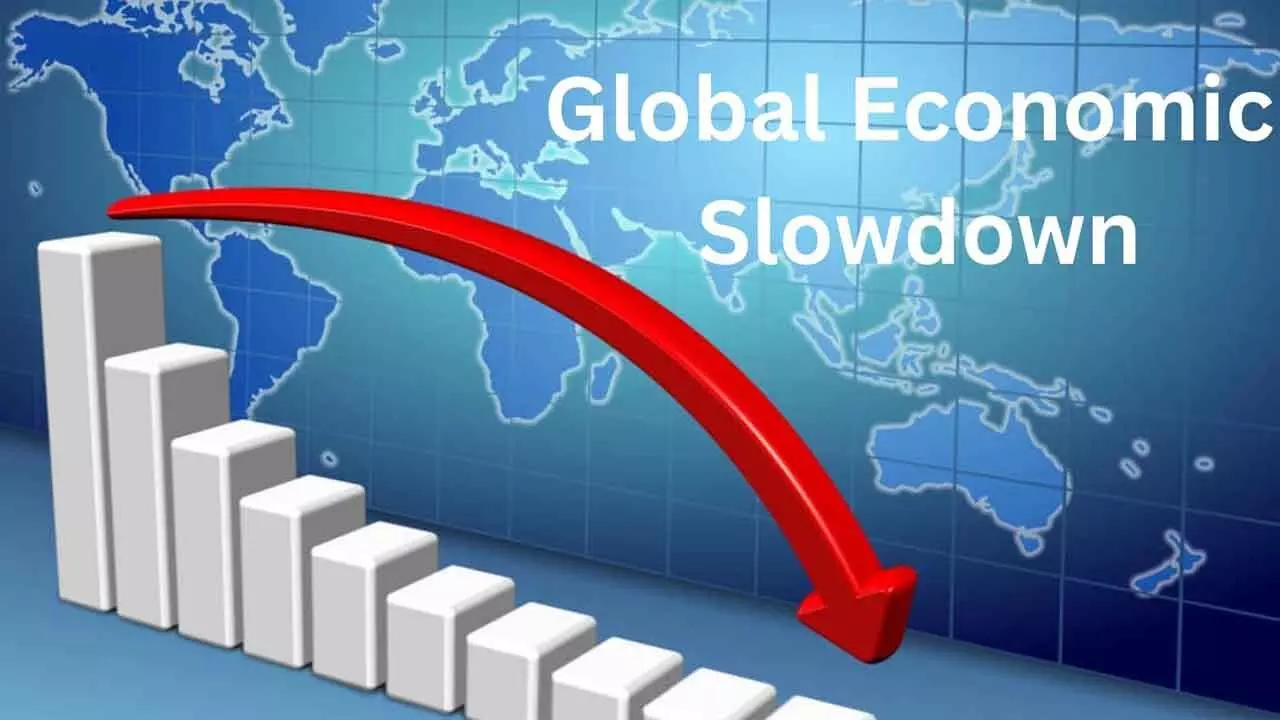Prudent Policy Making Key To Steadying Growth: OECD
Prudent Policy Making Key To Steadying Growth: OECD

The Organisation for Economic Co-operation and Development (OECD) has issued its latest projections for the global economy, providing an optimistic yet cautious outlook for 2025. According to the organization’s analysis, the world economy is poised for steady growth, but uncertainties stemming from geopolitical tensions, inflationary pressures, and climate-related risks continue to pose challenges to sustained expansion. The OECD emphasizes the importance of structural reforms, green investments, and coordinated policy efforts to ensure a resilient and inclusive recovery.
The OECD forecasts that the global economy will expand by approximately 3.0% in 2025, a slight acceleration from the estimated 2.7% growth in 2024. This anticipated growth reflects a stabilization of economic activity after a period marked by volatility and disruptions. The organization attributes this outlook to ongoing technological innovations, increased investment in green infrastructure, and the gradual easing of inflationary pressures.
While the growth rate remains moderate compared to pre-pandemic levels, it signals a positive trajectory toward normalization. The OECD underscores that this pace of growth is sufficient to improve living standards, reduce unemployment, and support fiscal sustainability in many countries, provided that policymakers address prevailing risks effectively.
Regional Perspectives
United States: The US economy is projected to grow around 2.8% in 2025. The resilient labor market and consumer confidence continue to underpin growth, supported by technological advances and fiscal stimuli. However, the organization warns that inflation, although declining, remains above target, necessitating cautious monetary policy adjustments.
Euro Area: Growth in the eurozone is expected to reach approximately 1.9%, driven by robust domestic demand and ongoing structural reforms. Energy prices are anticipated to stabilize, easing inflationary pressures. Nonetheless, geopolitical tensions and energy transition costs could temper momentum.
China: China’s economy is forecasted to grow at about 5.2%, reflecting ongoing structural reforms and an emphasis on domestic consumption. However, demographic challenges and real estate sector vulnerabilities could constrain longer-term expansion.
Emerging Markets: Emerging economies are projected to expand by around 4.2%, supported by commodity exports and increased foreign investment. Yet, currency volatility and debt levels remain concerns, especially in regions heavily reliant on external financing.
Inflation and Monetary Policy Dynamics
The OECD highlights that inflation, which surged in many economies during the post-pandemic recovery, is expected to stabilize around 3% globally in 2025. Central banks are likely to maintain a cautious stance, balancing the need to curb inflation with the risk of stifling growth. The organization advocates for targeted monetary policies that support price stability without undermining economic resilience.
Structural Reforms
A key theme of the outlook is the necessity for structural reforms to sustain growth and foster inclusivity. The OECD urges countries to prioritize investments in digital infrastructure, green energy, and education to enhance productivity and competitiveness. These reforms are essential for addressing long-term challenges such as aging populations, income inequality, and climate change. The report emphasizes that green investments are not only vital for meeting climate goals but also represent significant economic opportunities. Transitioning to sustainable energy sources and fostering innovation in clean technologies can generate new jobs and stimulate economic activity.
Climate Change
Climate risks remain a central concern in the OECD’s outlook. The organization warns that failure to accelerate climate action could lead to severe economic disruptions, including extreme weather events, supply chain interruptions, and increased health costs. Conversely, investments in renewable energy, energy efficiency, and climate adaptation can bolster economic resilience and create a more sustainable growth path. The OECD advocates for international cooperation and policy coherence to mobilize private and public investments needed for the green transition. Achieving net-zero emissions by 2050 remains an ambitious but attainable goal if concerted efforts are sustained.
Uncertainties
Despite the optimistic projection, the OECD cautions that several risks could impede growth in 2025. These include: Geopolitical tensions: Ongoing conflicts, trade disputes, and diplomatic frictions could disrupt global supply chains and investment flows.
Inflation persistence: Although easing, inflation could remain above target levels, prompting premature tightening of monetary policies.
Financial stability concerns: Rising debt levels and interest rate hikes may increase vulnerabilities in financial markets.
Demographic shifts: Aging populations in advanced economies could strain social welfare systems and labor markets.
Climate shocks: Extreme weather events and environmental crises could cause economic setbacks, especially in vulnerable regions.
The OECD emphasizes the importance of proactive policy measures, international cooperation, and resilience-building strategies to mitigate these risks.
Recommendations
To capitalize on the positive outlook and navigate uncertainties, the OECD recommends:
Continued monetary prudence: Central banks should adopt a cautious approach, adjusting policies gradually to avoid destabilizing markets.
Fiscal sustainability: Governments should maintain fiscal discipline while investing strategically in growth-enhancing sectors.
Accelerated structural reforms: Focus on improving labor market flexibility, digitalization, and education systems.
Green investments: Prioritize sustainable infrastructure and renewable energy projects.
Inclusive growth policies: Address inequalities through social protections and equitable access to opportunities.
Enhanced international cooperation: Strengthen multilateral efforts to manage climate change, trade, and geopolitical risks.
(Agencies)

